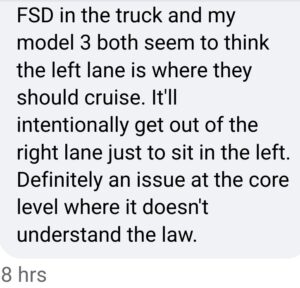Elon Musk initially said Tesla driverless was created in response to a lawsuit over a cyclist death. A Tesla owner had sued claiming an intoxicating “new car smell” causing him to fall sleep should be blamed for death of a cyclist on Highway 1 just north of Santa Cruz, California.
A media blitz ensued with Musk angrily tweeting that he would prove how to stop all cyclist deaths from cars by deploying driverless technology, where drivers could sleep and still be safe.
That was a decade ago in 2014 when AI was completely useless and unethical. However, clearly immoral Stanford activists like Fei-Fei Li, and a couple young Canadian graduate students, had totally sold Musk on the lie that AI would make driverless cars easily and rapidly achievable.
By 2016 Elon Musk was so steeped in the Stanford AI fraud cycles that he expanded his infamously wrong claims; drivers were told they would never need to touch the steering wheel at all by 2017! In fact, it was the opposite. Driverless required even more attentive drivers, not less. In April 2018 a Tesla ran over and killed a man who had stopped riding and stood next to his bike. Tesla hired armies of lawyers to bury this story, which is why the American press only reported on an Uber killing a pedestrian at the same time as Tesla.
Right? Everyone knows the Uber story. Have you ever heard about how Tesla killed a man standing by his bike at almost the exact same time?
And so fast forward to today, Uber cancelled their deadly driverless program while Tesla has killed yet another cyclist and criminally sped off to kill again and again and again:
The Los Angeles Police Department is asking for the public’s help to identify the driver of a Tesla that hit and killed a bicyclist and then fled the scene without stopping.
It happened on July 1, around 10 p.m. in South Los Angeles.
According to the LAPD, a black Tesla Model X was speeding eastbound on 67th Street in the direction of Flower Street, close to the 110 Freeway.
The Tesla struck a cyclist that was riding on 67th Street, knocking them to the ground in a violent collision.
The Tesla driver then sped off, not stopping to identify themselves or render aid, which is required by state law. Instead, the Tesla fled east toward Broadway Avenue where it was last seen.
Paramedics arrived on scene and transported the unidentified male cyclist to the hospital where he was pronounced dead.



